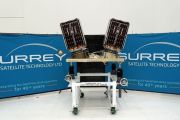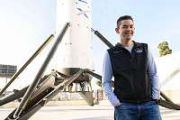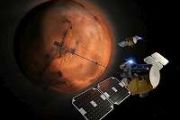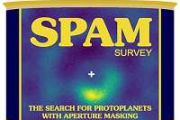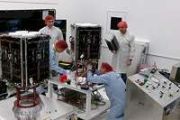
Copernical Team
Russian spacewalk cut short due to issue with suit
 A spacewalk by two Russians on Wednesday was ended abruptly due to a problem with the battery in cosmonaut Oleg Artemyev's suit, though at no point was he in any danger, the US and Russian space agencies said.
"Oleg, you must return to the airlock as soon as possible," the Earth-based Russian mission controllers ordered, more than two hours into his trip outside the International Space Stat
A spacewalk by two Russians on Wednesday was ended abruptly due to a problem with the battery in cosmonaut Oleg Artemyev's suit, though at no point was he in any danger, the US and Russian space agencies said.
"Oleg, you must return to the airlock as soon as possible," the Earth-based Russian mission controllers ordered, more than two hours into his trip outside the International Space Stat Voyager logs 45 years in space as NASA's longest mission to date
 Launched in 1977, the twin Voyager probes are NASA's longest-operating mission and the only spacecraft ever to explore interstellar space.
NASA's twin Voyager probes have become, in some ways, time capsules of their era: They each carry an eight-track tape player for recording data, they have about 3 million times less memory than modern cellphones, and they transmit data about 38,000 time
Launched in 1977, the twin Voyager probes are NASA's longest-operating mission and the only spacecraft ever to explore interstellar space.
NASA's twin Voyager probes have become, in some ways, time capsules of their era: They each carry an eight-track tape player for recording data, they have about 3 million times less memory than modern cellphones, and they transmit data about 38,000 time NASA's new rocket on launchpad for trip to Moon
 NASA's giant new SLS rocket arrived at its launchpad Wednesday in Cape Canaveral ahead of a planned flight to the Moon in less than two weeks.
It will be the maiden voyage of the Artemis program - America's quest to return humans to the Moon for the first time since the last Apollo mission in 1972.
The Artemis 1 mission, an uncrewed test flight, will feature the first blastoff of the Sp
NASA's giant new SLS rocket arrived at its launchpad Wednesday in Cape Canaveral ahead of a planned flight to the Moon in less than two weeks.
It will be the maiden voyage of the Artemis program - America's quest to return humans to the Moon for the first time since the last Apollo mission in 1972.
The Artemis 1 mission, an uncrewed test flight, will feature the first blastoff of the Sp Test chamber for NASA's new cosmic mapmaker makes dramatic entrance
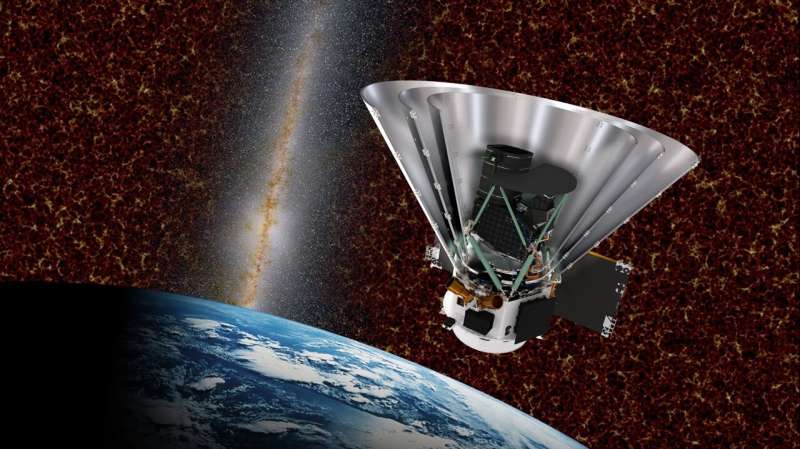
After three years of design and construction, a monthlong boat ride across the Pacific Ocean, and a lift from a 30-ton crane, the customized test chamber for NASA's upcoming SPHEREx mission has finally reached its destination at Caltech's Cahill Center for Astronomy and Astrophysics in Pasadena.
Set to launch no earlier than June 2024, SPHEREx (short for Spectro-Photometer for the History of the Universe, Epoch of Reionization and Ices Explorer) will make a unique map of the cosmos that will contain hundreds of millions of objects, including stars, galaxies, star-forming regions, and other cosmic wonders.
Facilitating the development of LEO mega constellations

The rapid development of Low Earth Orbit (LEO) mega constellations has significantly contributed to several aspects of human scientific progress, such as communication, navigation, and remote sensing. However, unrestrained deployment of constellations has also strained orbital resources and increased spacecraft congestion in LEO, which seriously affects the safety of in-orbit operations of many space assets.
For the long-term and sustainable development of space activities in LEO regions, space environment stability must be maintained using more rational surveillance and governance mechanisms. In a review paper recently published in Space: Science & Technology, Jingrui Zhang from School of Aerospace Engineering, Beijing Institute of Technology, analyzed the research gap and facilitated the development of LEO mega constellations.
First of all, the author reviewed the current developments of typical LEO mega constellations, including Starlink, OneWeb, Iridium Next, Globalstar, and Flock. Taking SpaceX's Starlink as an example, it aims to build a LEO constellation containing 42,000 satellites to achieve global coverage, high-speed, large-capacity, and low-latency space-based global communication system. Starlink has shown excellent performance in related fields, such as international aviation and ocean transportation. Moreover, Starlink can be constructed as a powerful command and communication network and has already been an important symbol of the weaponization of outer space in the United States.
NASA's moon rocket moved to launch pad for 1st test flight
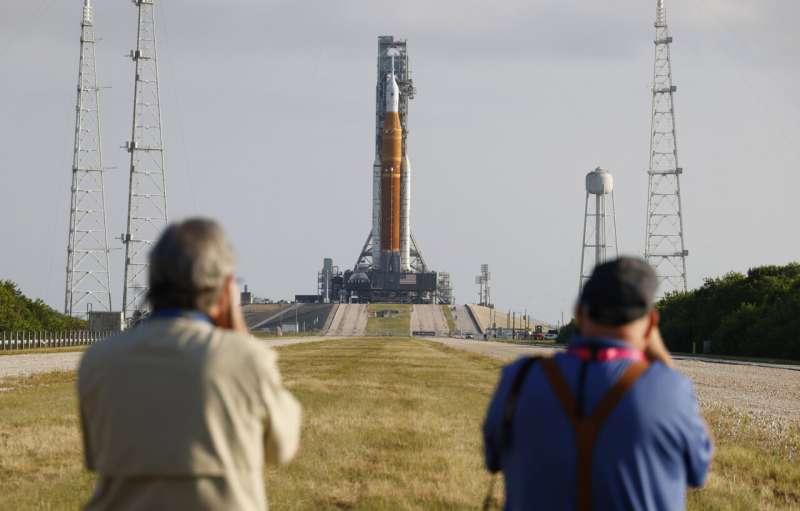
NASA's new moon rocket arrived at the launch pad Wednesday ahead of its debut flight in less than two weeks.
The 322-foot (98-meter) rocket emerged from its mammoth hangar late Tuesday night, drawing crowds of Kennedy Space Center workers, many of whom were not yet born when NASA sent astronauts to the moon a half-century ago.
Russian spacewalk cut short by bad battery in cosmonaut suit
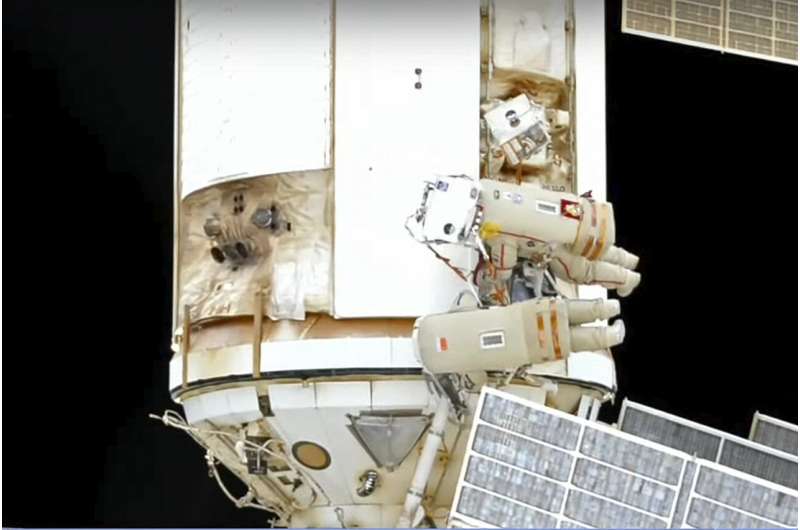
The mission to make longer-lasting space drugs
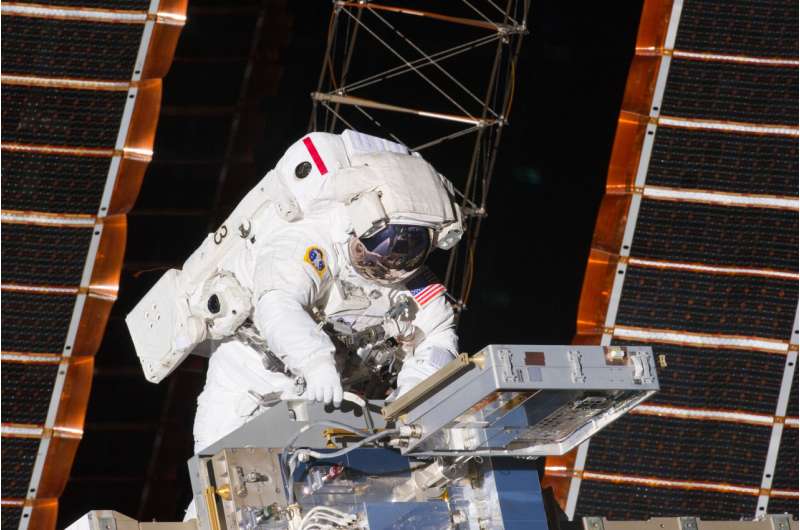
How do we make medicine last the extreme conditions of space exploration?
How would you manage a headache while flying to Mars?
You might try the Earth remedy of taking a painkiller. But on a 2-year round trip, how long would they last? And could you trust them?
Martian migraine
Access to medical supplies is a major concern for astronauts. Sleep issues, pain, congestion and allergies are all common complaints from those on extra-terrestrial missions.
The use of medication by American crewmembers on the International Space Station (ISS) was monitored between 2002 and 2012. And according to the data, astronauts used sleep tablets 10 times more often than earthlings. They also used ibuprofen for pain stemming from space flight pressure changes, higher carbon dioxide levels and joint issues.
Unfortunately, the longer the space flight, the higher the chances of experiencing acute illness. Common health problems for astronauts include a weakened immune system, bone decalcification and low blood pressure.
On Earth, most medicines expire within a year.
Watch Live: NASA Artemis 1 rocket begins pre-launch rollout
 NASA began rolling out its Space Launch System rocket to the launch pad at Kennedy Space Center in Florida on Tuesday night, ahead of its premiere flight later this month.
The uncrewed test flight is part of the plan to return man to the moon.
NASA live-streamed the rollout of the Artemis I Moon rocket, the largest ever built by NASA, on Launch Pad 39B. The movement was expected
NASA began rolling out its Space Launch System rocket to the launch pad at Kennedy Space Center in Florida on Tuesday night, ahead of its premiere flight later this month.
The uncrewed test flight is part of the plan to return man to the moon.
NASA live-streamed the rollout of the Artemis I Moon rocket, the largest ever built by NASA, on Launch Pad 39B. The movement was expected Researchers propose plasma-based method of extracting oxygen on Mars
 A group of scientists have developed a plasma-based method of producing and separating oxygen on Mars, according to a study published Thursday.
The team of researchers from the University of Lisbon, the Massachusetts Institute of Technology, Sorbonne University, Eindhoven University of Technology and the Dutch Institute for Fundamental Energy Research shared a method that can harness an
A group of scientists have developed a plasma-based method of producing and separating oxygen on Mars, according to a study published Thursday.
The team of researchers from the University of Lisbon, the Massachusetts Institute of Technology, Sorbonne University, Eindhoven University of Technology and the Dutch Institute for Fundamental Energy Research shared a method that can harness an 

